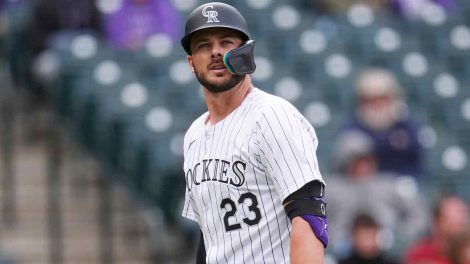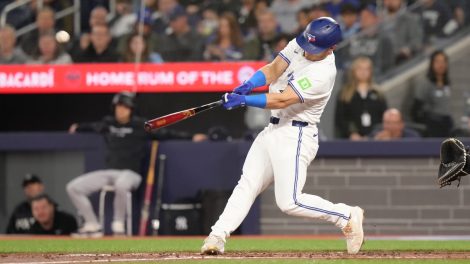As MLB executives arrive at the Boca Raton Resort and Club for the 2015 GM Meetings, they know that while upgrading their teams over the winter is challenging, adjusting later will be even harder.
Many club executives are increasingly motivated to address as many needs as possible during the off-season because making meaningful summer upgrades has become more difficult in recent years. Sportsnet asked a sampling of 10 experienced MLB executives to identify the biggest impact the second Wild Card berth has had on team-building. The most common observation: It’s now considerably harder to make significant mid-season additions.
Since its inception in 2012, the second Wild Card spot has led to more buyers and fewer sellers in July, creating a sellers’ market that leaves a lasting impression.
“This makes teams go out and add more depth in the off-season,” an NL exec said.
For some the pressure’s on already. Fail to upgrade over the winter and you run the risk of scrambling later. Some teams have learned that the hard way by pursuing summer trades only to hear that potential sellers think they have a chance in the Wild Card race.
“In-season, especially now in the AL, almost every team is in it which creates more buyers than sellers,” one AL GM said. “The chance to make big changes to your roster is probably less available.”
While it’s possible to add the likes of a David Price and Troy Tulowitzki mid-season, the Toronto Blue Jays were exceptionally aggressive, parting with multiple well-regarded prospects. Demand ensures prices remain high throughout July, which makes the summer trade market unappealing or flat-out inaccessible for other clubs.
Because teams can’t count on mid-season fire sales, the focus shifts to off-season upgrades both on the trade market and in free agency. Executives expect the vast majority of teams to be in buying mode this off-season, heightening competition.
Under MLB’s old one-Wild Card format teams had a much clearer picture of who had a chance. Now, it’s harder to blow up a reasonably competitive team. Add a few new players, catch some breaks, win 87, get hot at the right time, and you could win the World Series. It may be unlikely, but it’s imaginable.
With so many teams eyeing 2016 success, creativity in deals is a must. Expect to see talent-for-talent trades such as the Rick Porcello-Yoenis Cespedes deal that took place last winter. The rise of bad contract swaps may continue, as teams look for ways to free up cash.
It’s also a good time to be a mid-tier free agent. The kind of second-tier middle relievers who might have been overlooked five years ago are in demand from clubs that want to win now.
Last year that approach led the Astros to Luke Gregerson and Pat Neshek and helped Houston reach the playoffs. Yet adding a free agent or two doesn’t assure teams of success. The White Sox landed David Robertson, Melky Cabrera, Adam LaRoche and Zach Duke last winter and all it got them was a pricey fourth-place finish.
That’s why some executives try to resist the temptation that exists to go for it every year. Over-investing in the present can cost future teams dearly.
“It can be an easy trap to fall into if you’re on the fringes of contention and go “all-in” to land what amounts to potentially one more game,” a second NL executive said. “Misevaluating that window can be catastrophic.”
Yet that line of reasoning can be a tough sell for fans or owners, logical though it may be. As long as the possibility of a quick turnaround exists, it’s harder to make the case that an extended Cubs or Astros-style rebuild is required. Instead, many teams take shots every single year. Sometimes it’ll work, spurring others on to do the same. Other times it will fail and prevent those teams from acquiring the kind of talent base that will allow Chicago and Houston to remain competitive for years.
Even building an elite team offers few guarantees. Just as lesser teams can advance, top teams such as the Pittsburgh Pirates aren’t even assured of a Division Series appearance in some years.
“It drives teams to the middle,” an AL executive said. ” The main thing is teams are less likely to rebuild because 86 can get you in, and then anything can happen.”
The first steps to sneaking in typically take place during the winter. As baseball’s middle class grows and summer trades become harder to pull off, the off-season becomes that much more vital for would-be contenders.










